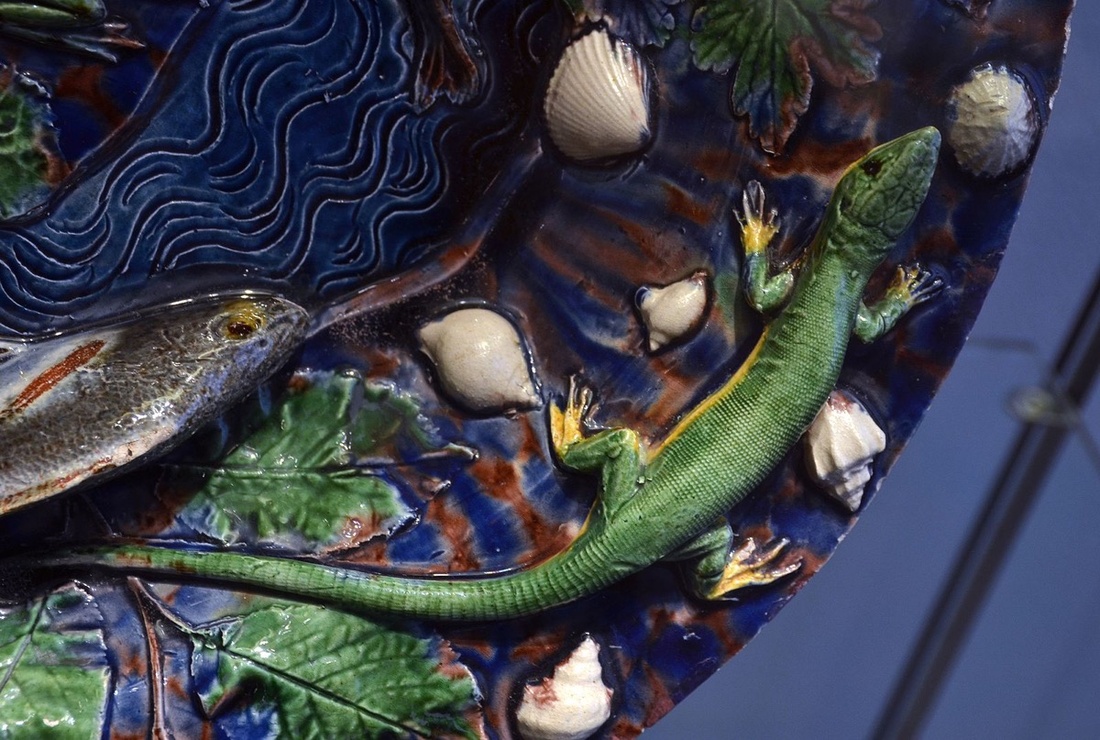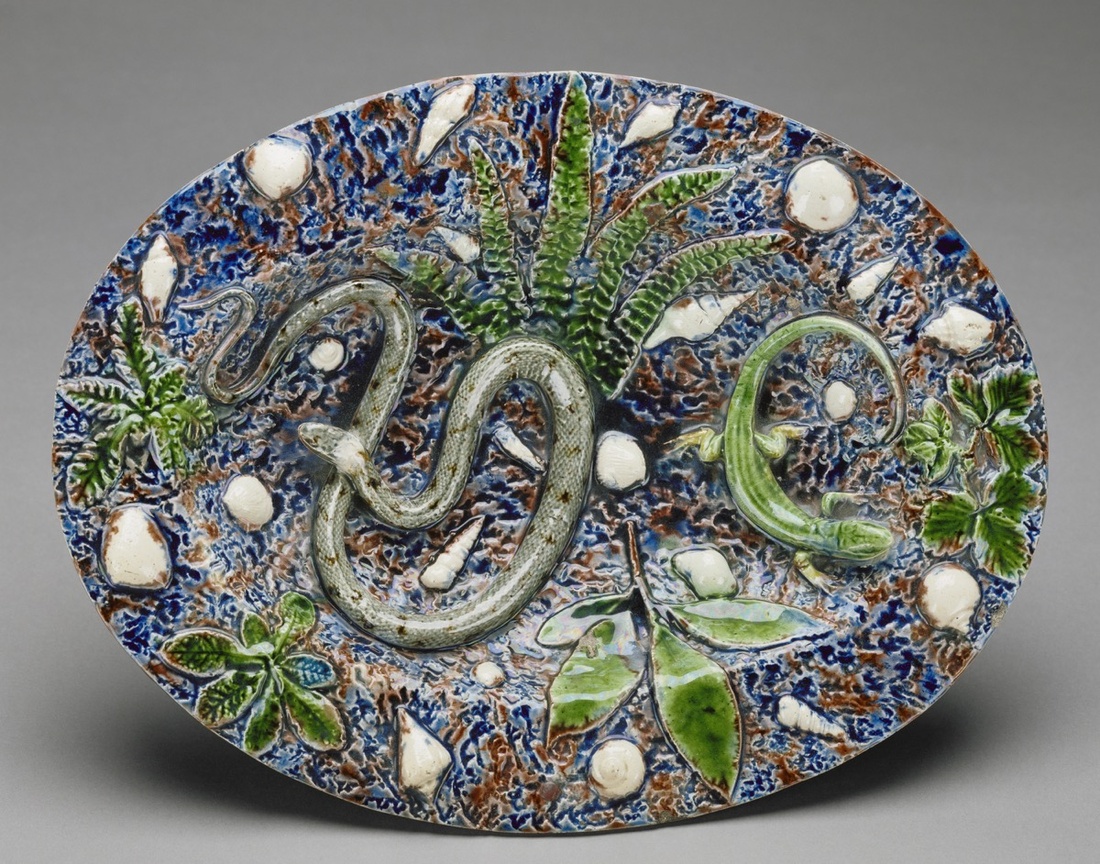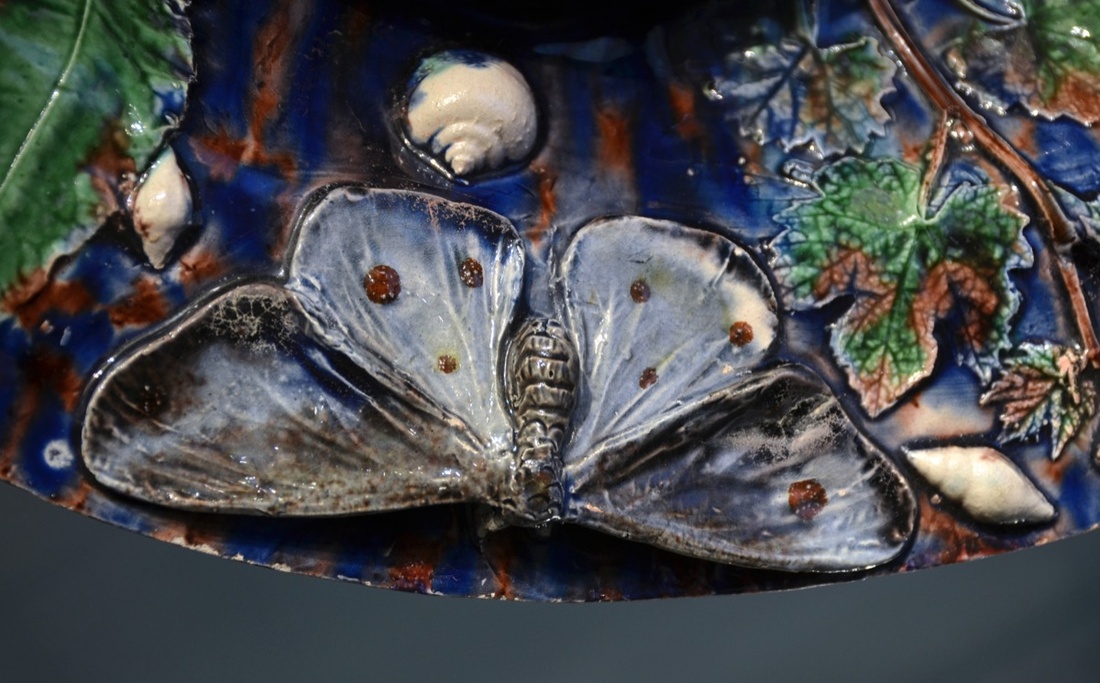cultură şi spiritualitate

Bernard Palissy, 1550. Photo via Wikimedia Commons.
The 16th-century Frenchman Bernard Palissy was a true Renaissance polymath whose myriad areas of expertise ranged from painting and glassmaking to geology and natural history. He conducted experiments and wrote treatises that enriched both paleontology and ceramics.
Today, Palissy’s legacy thrives through a series of curious, rustic ceramic dishes. These glossy, sculptural vessels and platters are glazed in vibrant jewel-tones and crawling with various animal species—forms that Palissy made by taking casts of living, breathing creatures. Enchanting and eccentric, they’re held in the collections of major institutions like the Victoria and Albert Museum (V&A) in London and the Getty in Los Angeles.
Long before Palissy began experimenting with ceramics, he received early lessons in drawing and glass-painting. He was born into humble beginnings, to a peasant family in southwestern France around 1510. In his late teens, he left home and took his artistic talents on the road, traveling across Europe. He eventually settled and started a family in Saintes, France, a city with a rich history of ceramics production, where he set up a workshop of his own.

Bernard Palissy, 1565-85. © Victoria and Albert Museum, London.
Palissy’s passion for the medium was incited by a white ceramic cup he saw around 1540. Taken by the refined, pure-white vessel—which is believed to have been Italian porcelain—he was inspired to launch what would be a 16-years-long venture to develop his own elegant objects. Instead of emulating the porcelain, though, Palissy developed a pale-colored earthenware clay, and forged a new, unique style. His dishes were adorned with brilliant, gleaming glazes and realized through an unprecedented use of a life-casting method.
In Renaissance Europe, life-casting was already widely used among 16th-century metalworkers, who were creating decorative objects in gold and bronze adorned with figurines of natural species—in line with the era’s enthusiasm for the natural world, and the rise of mannerism. Palissy adapted the technique to his purposes, creating plaster casts to be used with clay; he’s considered the first to use the technique for ceramics.
Using life-casting, Palissy created molds of small animals and plants which he would use to adorn his plates, basins, and ewers. “As the potter cast teeming pond scenes into clay, his procedure alluded to his conception of the earth’s own generation of mineral, vegetable, and animal objects,” writes Dr. Hanna Rose Shell in a 2004 article on the artist. “Meanwhile, his products existed as sculptural renditions of the natural world.”

Bernard Palissy, 1570-90. © Victoria and Albert Museum, London.
A choice basin in the permanent collection of the V&A, for example, features a squiggling snake at its center, encircled by slithering fish, a sprightly frog, and a dainty crayfish, all atop a cobalt blue watery base, and accented with ferns and other emerald-green vegetation. Like much of Palissy’s work, this dioramic vision of pond life is more a testament to nature than a utilitarian vessel meant to carry food.
To create his works, Shell explains, Palissy would begin by creating casts of rocks, which would serve as the foundations for the sculptural scenes. Then came the life-casting, “the goal of which was the artificial petrification of aquatic and amphibian creatures,” Shell writes, “that is, their literal transformation into stone.” This started by collecting real plant, animal, and mineral specimens, sourced from ponds, lakes, and caves. Already well-versed in the life sciences at this point in his life, Palissy furthered his understanding and theories of the natural world during this expeditions. His fascination with pond ecosystems is in keeping with a pronounced interest in these environments among Renaissance-era intellectuals.
Captured subjects, like frogs and lizards, were kept alive, and their bodies preserved—intact and unblemished. “A lost lizard leg or punctured snake head would render the specimen useless,” Shell writes. Palissy caught snakes by hand, with heavy rags; fish and aquatic creatures with nets; and frogs and lizards with knotted string. The collecting process was not only physically challenging but also dangerous—some of Palissy’s subjects were venomous.

Bernard Palissy, Oval Plate, mid-16th century.
Though he documented much of his life and work in writing, Palissy kept much of the specifics of his life-casting process secret. Based on the methods of fellow French artisans who also employed this technique, it’s likely that he kept a menagerie of specimens in jars in his workshop. Once it was time to cast a subject, it was customary to dip the creature in vinegar or urine, coat it in a greasy substance, then position it on a bed of plaster, arranged in a striking, lively pose. The final step would have been covering—as in, suffocating—the specimen with additional plaster.
After the plaster was set and dried (and the deceased animal’s body removed), the mold appeared remarkably similar to a fossil, Shell notes. Palissy would press clay into these molds, then carefully attach the resulting figures to his vessels, using needles and palette knives. The finished compositions were then fired and painted with custom glazes Palissy invented—translucent, lead-based substances infused with metallic oxides. They were then fired one final time.
Each work is a sort of microcosm of the natural world, which bears evidence of the barbaric process that brought it to fruition. “Palissy’s ceramic productions compressed both nature and time into clay,” Shell writes. “He brought plates to life by killing nature, burning wood, and cooking earths.”
From the time he perfected his process until his death in 1590, Palissy’s methods, and his compositions, changed very little (many a platter can be found with a squirming snake at its center). Palissy developed a following, his ceramics becoming known as “Rustic Ware” or “Palissy Ware.” Fellow artists began copying his style, and he attracted serious patrons, like Constable Anne de Montmorency in Saintes, who would later introduce him to the queen mother of France, Catherine de Médici.

Bernard Palissy, 1550. Image via Wikimedia Commons.
As a staunch and outspoken Huguenot in a Catholic nation, the artist was rescued by his influential supporters on numerous occasions, when Catholic authorities imprisoned him for his beliefs. He showed them gratitude by repaying them with his vessels.
Montmorency and Medici would later bring Palissy to Paris, where he enjoyed considerable wealth. He spent the rest of his life in the city. Médici installed him within the royal household and christened him Ouvrier de Terre et Inventeur des Figulines Rustiques (“Worker of the Earth and Inventor of Rustic Ware”). In 1567, she even commissioned him to build her a grotto in the Palais des Tuileries gardens. Though he established a factory specifically to create the grotto, it was never realized, for reasons that still aren’t understood. During this time Palissy also gained acclaim by delivering public lectures on natural history, which complemented his ceramic works. But his luck would eventually run out: In 1588, the artist was arrested a final time and sent to the Bastille, where he died two years later.
While Palissy Ware can be found in museums and private collections around the world today, few existing pieces bear the original artist’s signature. The style of ceramics that the artist initiated was produced by “followers” well into the 17th century, though even artists riding on Palissy’s coattails can be found in impressive collections, like that of the Metropolitan Museum of Art.
Today, as outliers among the history of ceramics, and something of an oddity among the decorative arts, Palissy’s works are welcome manifestations of the 16th-century Renaissance: deeply strange objects that equally champion the realms of art and science.
—Casey Lesser
Adaugă un comentariu
© 2024 Created by altmarius.
Oferit de
![]()
Embleme | Raportare eroare | Termeni de utilizare a serviciilor













Pentru a putea adăuga comentarii trebuie să fii membru al altmarius !
Alătură-te reţelei altmarius